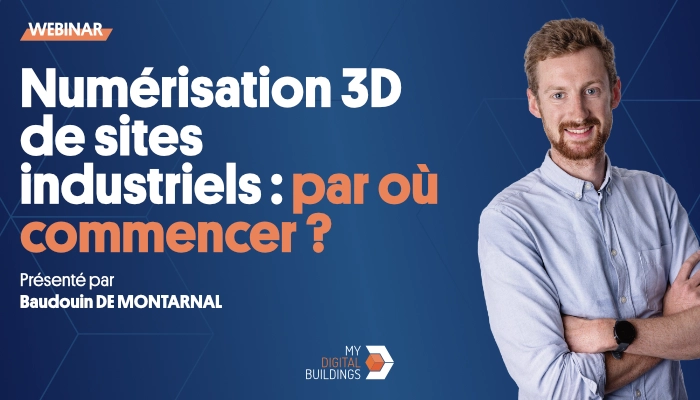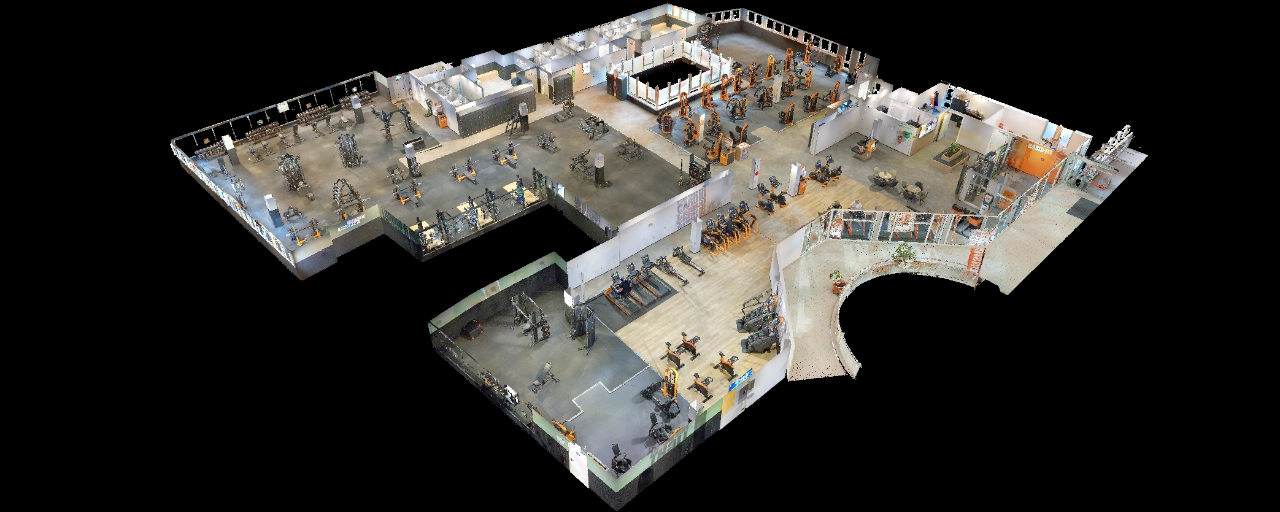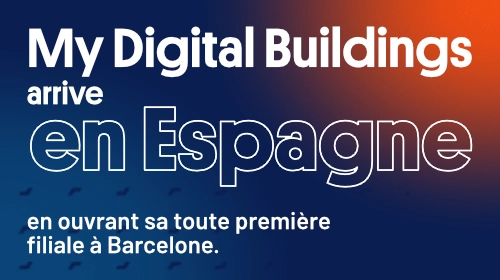
The High-Tech Trends of the Global Industries 2019 Show


We could expect a show of big machines but the Global Industrie exhibition in Lyon, which was held from 5 to 8 March 2019, is also a good witness to the digital transformation of our world. The industrial sector is not left behind because in addition to innovations, it also has its startups and new models. Without being exhaustive, here are a few trends that I have seen.
A large part of the show was dedicated to digital, connected and collaborative solutions for the industry. We are well into the 4th industrial revolution, in every aisle we are talking about digital transformation, it is not a scoop. Machine tools are all numerically controlled, from machining to cutting (a lot of laser or pressurized water machines), including surface treatment or the assembly of parts. Robots are everywhere and multi-faceted. Moreover, surprisingly, I have encountered a few humanoid forms, in the belief that humans are not adapted to the industrial environment. The question that quickly comes to mind is: how long will it take for man to disappear from the worlds of production? There are articulated arms for moving objects or as tool supports (painting, welding, machining, etc.), autonomous “rolling” robots moving between different spaces and now there are even drones responsible for carrying out automatic inventories from the air (Eyesee / Squadrone). Antoine Level, CEO of Squadrone, shared with me that for the first time an inventory could be carried out more quickly than expected with a coverage rate close to 100%, this opens a new era.
For neophytes to the industrial world, the impressive side of this show is the size of the equipment. Some machines occupy several tens of square meters, and they are exhibited there, at the show, in operation of course. I understand a little better the hundreds of trailers parked in the exhibitor car park. By the way, it is one of the few fairs I have been able to attend where you can hear the sounds of machines working.
Additive manufacturing represents an ever greater place and competes directly with machining manufacturing processes, which are more economical on material because nothing is lost. 3D printers use ever more varied materials, some printed parts are flexible, others are completely deformable (a kind of rubber), but overall, what I note is that quality and productivity are increasing (more resistance, better finish, faster printers). Some printed parts even have greater strength than a part machined from the material for a much lower weight. The interior of the room is a partitioned structure (sometimes honeycomb type), which explains the gain in weight and resistance.
All the major trends in the high-tech world are represented, we note that the convergence of the real and digital worlds is under way.
Augmenting the human
To reduce the difficulty of certain tasks, Gobio offers ultra-light exoskeletons and AIO invented the sensor for the analysis of postures and movements at the workstation making it possible to calculate a relative index of workstation fatigue.
Pertech Solutions markets a system that looks like a pair of glasses without the lenses that analyzes the operator's eyes and their movements. For those who are in the field of sites or web applications, it's a bit like the Hotjar of the real world. A pointer constantly indicates in the camera view integrated into this pair of glasses where the operator is looking. It is the ideal sensor to validate the ergonomics of dashboards or control panels, analyze reactions in critical situations or even monitor the vigilance of the operator. Another useful application is to allow people with motor disabilities to write (really) with their eyes, in fact, they can draw eye curves.
Overcoming the human
Whether we are talking to energy managers like DCbrain or to production line managers such as S-Lean, Di-Analyse Signal, Arundo or Amiral Technologies, Artificial Intelligence helps to improve overall performance and to predict maintenance actions. These solutions make it possible to process and analyze a large amount of data with the possibility of learning from past situations in order to evolve and improve. They often offer a better understanding of processes and operations.
The virtual guardian angel of society ARKITE, is a bit like the Jiminy Cricket of the industrial operator who prevents errors and improves efficiency.
V-Optics offers a solution for controlling transparent surfaces or surfaces with a high reflective index. Where conventional optical approaches do not give any reliable results, the exploitation of deflectometry solves the problem. Insensitive to vibrations, this solution can be deployed in an industrial environment, contrary to interferometry approaches.
Beelse offers a “virtual warehouse” to store 3D files of parts to be printed, we are in cloud manufacturing.
Extend interfaces
Virtual reality, or in some cases mixed reality, makes it possible to develop training scenarios that are played remotely and safely, as proposed Jungle VR and Revinax or Wanadev. This often allows you to learn from your mistakes with no consequences other than to see a same player shoot again and start again! Nobody can blame you for breaking the last million-euro machine. A great promise of Speedernet Sphere “Act and perceive to train more effectively” which offers a solution to create a VR experience and make it accessible online in a few clicks.
Breaking the usual codes of control panels with switches and small lights, this is what offers PRODUCTOO by taking a real web turn, and adopting a modern approach to interfaces to manage production and organization. AMIA Systems opens new ways in analysis to improve production sites, maintenance, distribution and storage.
As for augmented reality solutions, they still need to be improved, their main weak point being the location in space and the stability of the rendering. However, some startups seem to be on the right track, such as XXII with a promising prototype for presenting underground networks.
ThinkDeep Proposed to mix artificial intelligence and virtual reality (VR), I remain convinced that it is a relevant approach to solving certain problems of location and attachment in reality.
So that humans can finally whisper in the ears of machines in noisy worlds, Simsoft Industry develops “homemade” intelligent voice assistants for technicians. Long live hands-free interactions without revealing its manufacturing secrets to the GAFA...
IoT and its solutions to connect everything
With more than 29 billion connected objects in 2020 (IDATE), it is not surprising that IoT platforms are flourishing, because without a solution to manage and capture data, there is no point in making everything communicative. We are only in the spring of IoT with less than 20% of industrial assets now connected and more than 70% of recorded production data still not used (World Economic Forum), can't wait for summer!
Some pose as pure players in information systems while others offer sensors and management infrastructure. For example, TEEPTRAK and SenX develop software solutions dedicated to the collection and analysis of sensor data while Ffly4u offers an interface and a communicating sensor to be attached to the mobile asset in order to monitor it and record its context at any time (temperature, shocks, movements).
The communities
Factoryz Build a community on the sharing of assets and human resources in the industrial world. The challenge is to intelligently compensate for variations in business costs by making underused equipment profitable and by allowing employees to lend a hand to other companies and to get rich in the process. Mobility Workadds a social network to its computer-aided maintenance management application (GMAO) to promote exchanges between all maintenance professionals. Not stupid!

And Smart Building in all of this?
Although we hear words like digitization, digitalization, digital transformation in every aisle, the notion of digital twin of buildings still seems to be just a concept without operational reality. Many are still wondering what they can do with their digitized building.
In 2018 according to the Cabinet ABI Research, globally, only 6% of manufacturing companies have a digital twin, 83% have started to find out, and 29% plan to try it in the next 12 months. According to this study, 54% of manufacturing industries should be equipped in 2026. The various analysis firms estimate that the global market for digital twins will be around 15 billion dollars in 2023. According to Gartner and IDC, companies that invest in a digital twin will have 30% improvement in their critical processes. So there will be a return on investment.
The digitization of a building is generally done using fixed or mobile laser 3D scanners. Once the data is collected, it can be used to:
establish precise plans, 3D models or even enriched models (BIM) to compare different states over time, for example before, during and after work. Who has never dreamed of having a view of their networks before the walls are closed? have a new interface for navigating buildings. If during the survey, you simultaneously capture 3D and 360° photos, you have the possibility of navigating your buildings remotely... What is better when the employees are not on site? And since I have 3D, do you know that I can take measurements remotely? This interface can also serve as a presentation support service for deployed IoT networks, for production monitoring, I see the machine, I click on it and I have the speed or the faults. Beyond the equipment manufacturers in the sector such as Hexagon or Faro present at the show, we are seeing the birth of alternative solutions for the digitization, valorization and use of 3D data, such as NavVis. The use of mobile 3D scanning means makes it possible to accelerate the 3D survey phase without compromising on quality (up to 30,000 m2/day). In addition, these new scanners make it possible to capture more than “geometry” and also take panoramic photos at close range (every meter for example). Based on this data, the uses described above can be activated (indoor virtual navigation, modeling, comparison, state archiving, etc.).
It is even possible to activate a location solution inside buildings without having to deploy infrastructure, a real “indoor GPS” from a simple mobile phone and prior 3D scanning. It therefore becomes possible to guide a technician on his site or a new collaborator. This solution is complementary to the location and tracking systems developed by Wyres (LoRa, BLE, UWB), Ubudu (BLE, UWB) or Orange (LoRa, BLE, UWB).
To establish specific 3D models in the industrial environment, 3D-REVERSE can establish complete 3D models of industrial environments, from capture to modeling.
A small special mention for ARSKAN which offers an interesting solution for visualizing the voluminous 3D data of a building directly in the web browser. Their solution is based on intelligent data compression developed in collaboration with the LIRIS.

In conclusion
It was at this exhibition that I learned that the Auvergne-Rhône-Alpes region was the first industrial region in France with more than 500,000 jobs in the sector. And it is also at this show that we take stock of the ongoing transformation, of this digital revolution that affects all professions. And now that all production or storage can be controlled and optimized in real time and often remotely, it remains to change the scale by focusing on artificial intelligence and the digital building, two concepts that will radically change the way in which all industrial units will be operated.
Even if humans tend to be persona non grata in the world of industrial production, there is still at least one place on Earth where it is good to meet them: living rooms! Thanks to all the enthusiasts with whom I was able to talk.


Let's study your project together
Contact us, we will study your project to provide you with an estimate as soon as possible
Contact us
To make sure you don't miss out on our news, subscribe to our newsletter now!
Receive quarterly updates directly in your inbox to stay informed about the latest news and events at My Digital Buildings.











